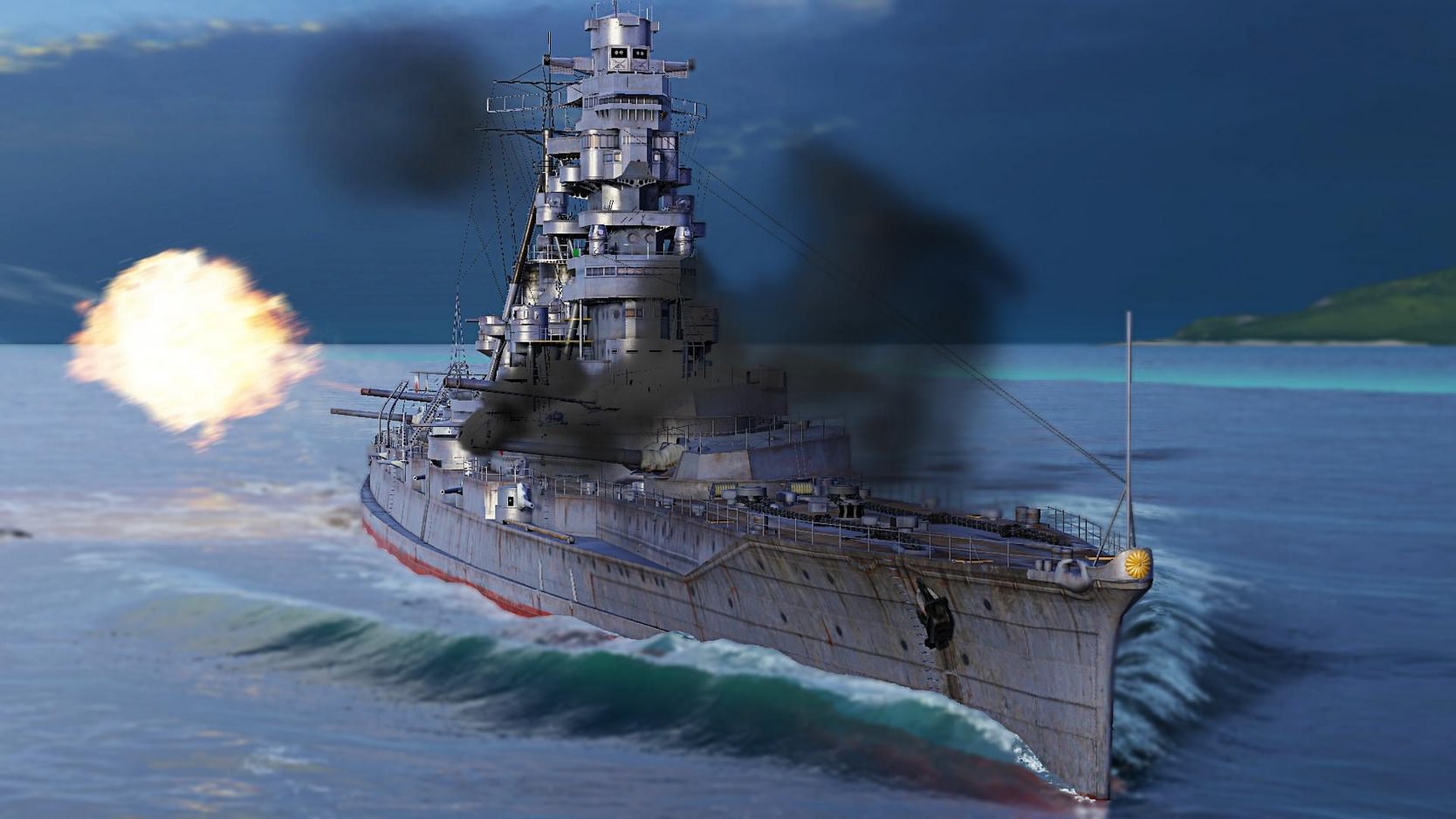IJN Kongo (BC-1914)
Return to Japanese Navy page:
The Kongo was the last capital ship completed outside of Japan for the Japanese
Navy. The other three ships of the class were all completed in Japan. The other
major thing this class did was to add the twin 14" turret to the Japanese
armoury. Beside the 16 turrets for this class, another 24 were built for the
Fuso / Hyuga classes.
I will not be trying to do new drawings for the Kongo class. The ships were as
good as they could be designed pre-WW1 and the Japanese rebuilds and
enhancements over the years were typically Japanese for the time. I have always
liked the Kongo's as they were. Big, powerful ships, they were better than the
British 'Splendid Cats' of the Lion/Tiger types. The penetration power of the
14" gun being far better than the 13.5" gun. The battlecruiser fight at Jutland
might have been a bit different with a couple of Kongo types in place of the
Lions.

Most of the information provided below is sourced and copied directly from
Wikipaedia.
During the late 1920s, all but Hiei were reconstructed and reclassified as
battleships. After the signing of the London Naval Treaty in 1930, Hiei was
reconfigured as a training ship to avoid being scrapped. Following Japan's
withdrawal from the treaty, all four underwent a massive second reconstruction
in the late 1930s. Following the completion of these modifications, which
increased top speeds to over 30 knots (56 km/h; 35 mph), all four were
reclassified as fast battleships.

The Kongō-class battleships were the most active capital ships of the Japanese
Navy during World War II, participating in most major engagements of the
war. Hiei and Kirishima acted as escorts during the attack on Pearl Harbor,
while Kongō and Haruna supported the invasion of Singapore. All four
participated in the battles of Midway and Guadalcanal. Hiei and Kirishima were
both lost during the Naval Battle of Guadalcanal in November 1942,
while Haruna and Kongō jointly bombarded the American Henderson Field airbase on
Guadalcanal. The two remaining Kongō-class battleships spent most of 1943
shuttling between Japanese naval bases before participating in the major naval
campaigns of 1944. Haruna and Kongō engaged American surface vessels during
the Battle of Leyte Gulf in late October 1944. Kongō was torpedoed and sunk by
the submarine USS Sealion in November 1944, while Haruna was sunk at
her moorings by an air attack in Kure Naval Base in late July 1945, but later
raised and scrapped in 1946.

There is quite a difference between Kirishima above and Haruna below with only
two years between the drawings. War really does compress research and
development.

The Kongo class spent a lot of time in dockyard hands with the amount of work
that was done to the ships in their 30 odd years of service.

|
General characteristics (Haruna as built) |
|
Type: |
Battlecruiser |
|
Displacement: |
27,384
tonnes (26,952 long tons) |
|
Length: |
214.58 m
(704 ft 0 in) |
|
Beam: |
28.04 m
(92 ft 0 in) |
|
Draft: |
8.22 m
(27 ft 0 in) |
|
Installed power: |
-
64,000 shp (48,000 kW)
-
36 × Yarrow boilers
|
|
Propulsion: |
-
4 shafts
-
2 × steam turbine sets
|
|
Speed: |
27.5 knots (50.9 km/h; 31.6 mph) |
|
Range: |
8,000 nmi (15,000 km;
9,200 mi) at 14 knots (26 km/h; 16 mph) |
|
Complement: |
1,193 |
|
Armament: |
-
4 × twin 356 mm guns (Vickers 14 inch/45 naval gun)
-
16 × single 152 mm guns
-
4 × single 76 mm AA guns
-
8 × 533 mm (21.0 in) torpedo tubes
|
|
Armor: |
-
Waterline belt: 203–76 mm (8–3 in)
-
Deck: 25 mm (1 in)
-
Gun turrets: 229–254 mm (9.0–10.0 in)
-
Barbettes: 254–76 mm (10–3 in)
-
Conning tower: 229 mm (9.0 in)?
|
|
General characteristics (Haruna, 1945) |
|
Type: |
Fast
battleship |
|
Displacement: |
32,156
tonnes (31,648 long tons) (standard) |
|
Length: |
219.61 m
(720 ft 6 in) |
|
Beam: |
33.1 m
(108 ft 7 in) |
|
Installed power: |
-
136,000 shp (101,000 kW)
-
11 × water-tube boilers
|
|
Propulsion: |
4 × steam
turbines |
|
Speed: |
30.5
knots (56.5 km/h; 35.1 mph) |
|
Range: |
10,000 nmi
(19,000 km; 12,000 mi) at 18 knots (33 km/h; 21 mph) |
|
Complement: |
1,500+ |
Sensors and
processing systems: |
-
1 × Type 21 air search radar
-
2 × Type 13 early warning radar
-
2 × Type 22 surface search radar
|
|
Armament: |
-
4 × twin 356 mm guns
-
8 × single 152 mm guns
-
6 × twin 127 mm (5 in)/40 dual-purpose guns
-
118 × Type 96 25 mm (0.98 in) AA guns
-
30 × depth charges
|
|
Armor: |
-
Deck: 120–80 mm (4.7–3.1 in)
-
Barbettes: 343 mm (13.5 in)
|
|
Aircraft carried: |
3
× floatplanes |
|
Aviation facilities: |
1
× catapult |

Return to Japanese Navy page:





